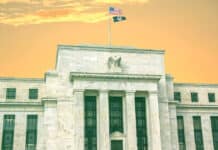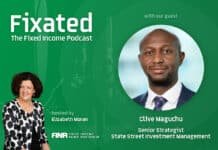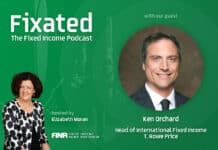
-
Long end of government curves under pressure
-
The global growth outlook is more than adequate
-
Taking stock of global fixed income performance
Longer for higher
We already have gone through the “higher for longer” phase. But now the focus has shifted. It is no longer about the short-end rates and monetary policy. It is all about long-end rates and fiscal policy, and this is a rather challenging development. Government curves have been steepening, especially in the long end, but not for the right reasons. Starting with Japan, the 10s30s segment (the difference between the yield on a 10-year bond and the yield on a 30-year bond) has steepened by 50bp since end-March, the largest move observed among major Developed Markets (DM).[1] Most other curves, from the US to the UK or Germany, have steepened by a good 20bp during the same period.[2] In most cases, this is not a signal that the macro backdrop is improving. Indeed, it is mainly about debt sustainability issues and the pricing of higher fiscal risk premiums. Perhaps in the US we should also start pricing in a higher Fed-lack-of-independence premium, given the current and noisy challenge to the Fed’s institutional autonomy. There is ample academic literature about the relationship between government debt and growth and other macro variables, but the short story is that too much debt is never a good thing. There have been plenty of real-life examples in emerging markets of government debt crises. The script is well known. But what does that mean for the US and other DM peers? The risk to long-end rates is skewed to the upside. Curves will likely continue to steepen. And the higher the long-end rates, the more sensitive global investors are going to become to fiscal credibility issues. Something we will continue to watch in the period ahead. For the investor that looks into curve positioning, it therefore makes sense to consider avoiding extending exposures far out down the curve.
Also read: Japan Versus the World. Why Bond Markets Have Never Been More Exciting
Global growth is doing just fine
The OECD produces useful leading indicators and the news for the global economy is pretty good.[3] After aggregating the country data to estimate a leading indicator for the global economy, Market Insights has established that the global outlook may now be the strongest observed since January 2022. While EM was the main engine of global growth expectations over the past few months, it is also interesting to note that DM has now caught up, mainly reflecting the considerable improvement in the outlook for Germany, the UK, and to a lesser extent Canada. In EM, the stronger growth momentum appears to come from Brazil, Korea, and India. Away from the OECD data, the global PMI numbers may well be less rosy, but they nonetheless continue to display a solid global growth picture. Likewise, the Fed’s global supply chain pressure index does not indicate any stress, with a level of supply chain pressure back to where it was pre-Covid. Overall, the global economy has yet to feel any impact from the global trade war. It may happen later but for now we believe the global growth backdrop remains supportive of risky assets.
Half-way leaderboard
Looking at the performance of global fixed income during the first half of 2025, the first observation is that fixed income did quite well, despite the challenging macro environment. The second observation is that I hear investors around the globe complaining about stretched spread valuation, but that was not an obstacle for the credit segments to produce strong returns. For instance, the global credit index delivered a return of 7.7% in H1, while US IG produced a return of 4.2%.[4]. Rather impressive over just six months. What this is telling us is one should pay attention to total yield valuation and take advantage of the attractive carry. Another theme that emerged was that global indices outperformed US based ones. In particular, the Global Agg benchmark returned 7.3%, against only 4.0% for the US Agg.[5] The EUR indices lagged, mainly hurt by the adverse rate move during the period. It was not a great time for EUR duration, with the Bund index scoring a negative return in H1.[6] In contrast, US duration did considerably better, with a return of 3.8% for H1.[7] To be clear, it was not a smooth ride for USTs: the bulk of the gain was scored in Q1 with Q2 a lot more volatile. Finally, the first six months marked the big comeback of EM local currency debt, with the EM local benchmark delivering a remarkable 14.9% return in H1. Currency did matter here: that performance was for the USD-denominated index.[8] In EUR terms, EM local debt was virtually flat. Looking ahead, we are of the view that fixed income remains well-positioned as an attractive de-risking asset class.
Sources:
[1] Bloomberg, Generic Japan Government Bond yield for the 30yr minus the yield for the 10yr, data as of 18 July 2025.
[2] Bloomberg. Difference between the 30yr government bond yield and the 10yr, data as of 18 July 2025
[3] Sources: Bloomberg, OECD. Based on the OECD composite leading indicators. Data as of June 2025.
[4] Sources: Bloomberg. Bloomberg global credit index, Bloomberg US credit index. Data up to end-June 2025. Returns are gross and in USD.
[5] Sources: Bloomberg. Bloomberg global aggregate index, Bloomberg US aggregate index. Data up to end-June 2025. Returns are gross and in USD.
[6] Sources: Bloomberg. Bloomberg bund index. Data up to end-June 2025. Returns are gross and in EUR.
[7] Sources: Bloomberg. Bloomberg UST index. Data up to end-June 2025. Returns are gross and in USD.
[8] Sources: Bloomberg, JP Morgan. JP Morgan GBI-EM Global Div index. Data up to end-June 2025. Returns are gross and in USD.

































